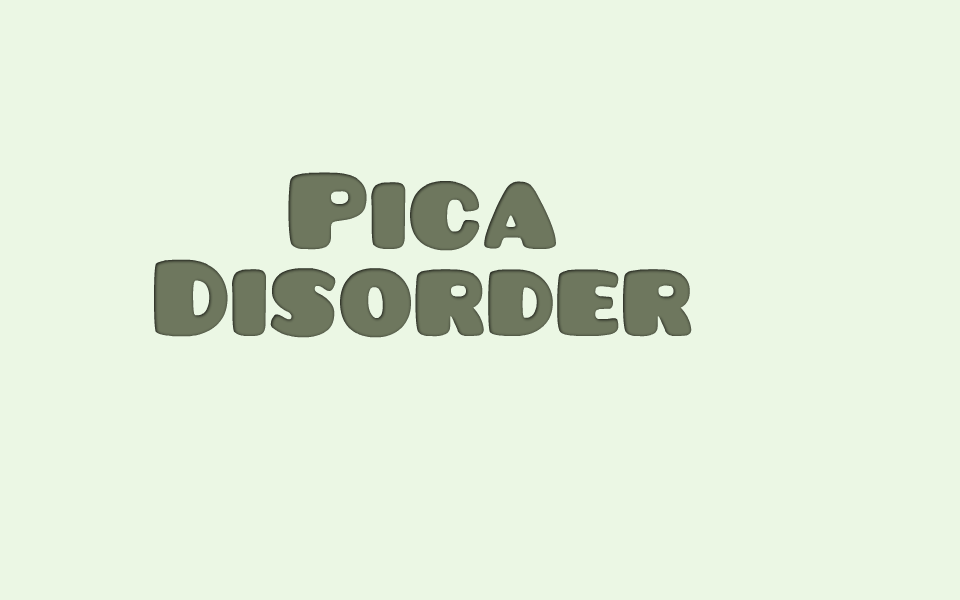

Per a WHO press release, the goal of the ICD-11 revisions is to help “simplify the coding structure and electronic tooling.” The new release demonstrates improved usability, updated scientific content, and provides more details for nutrition professionals and dietitians. National health program managers also need to be attuned to the coding updates, as well as anyone in a role that impacts the allocation of health resources based on diagnosis codes. For nutrition and wellness professionals working in private practice, it will most notably impact those seeking insurance reimbursement, as insurance payers are dependent on ICD coding. The ICD-11 release will have a widespread impact and implications across the healthcare industry. The newest ICD product, ICD-11, was released in 2018 for State Members to implement and will be ready to go into effect on January 1, 2022.
Coding for pica eating disorder update#
Releasing a new update to the ICD takes more than a decade of development. The World Health Organization is responsible for maintaining and updating the ICD. What updates to existing conditions have been made, and the clinical relevance of such updates.What new conditions have been added to the ICD-11.An overview of what nutrition conditions are included in both the “Nutrition Disorders” section and the “Feeding and Eating Disorders group”.Changes in the ICD-11 classification system to support nutrition professionals.In this article, we’re covering new and notable changes to be expected to the ICD-11 by nutrition professionals including: ICD defines the universe of diseases, disorders, injuries and other related health conditions, with each assigned a unique identifier code. Measures created or modified by Eric Stice, Ph.D.The International Classification of Diseases (ICD) was first established in the late 1800s, in an effort to help diagnostic classification standards for clinical and research purposes.

Journal of Consulting and Clinical Psychology, 71, 129-135. (2003). Prospective relations of body image, eating, and affective disturbances to smoking onset in adolescent girls: How Virginia slims. Journal of Consulting and Clinical Psychology, 73, 195-202. (2005). Psychological and behavioral risk factors for obesity onset in adolescent girls: A prospective study. Stice, E., Presnell, K., Shaw, H., & Rohde, P. Journal of Consulting and Clinical Psychology, 72, 62-71. (2004). Prospective relations between bulimic pathology, depression, and substance abuse: Unpacking comorbidity in adolescent girls. Journal of Abnormal Psychology, 112, 166-170. (2003). An experimental test of the effect of weight-loss dieting on bulimic pathology: Tipping the scales in a different direction. It is still under development and has not yet been validated.

It does not include pica, rumination disorder, or ARFID. This is a revised version of the original EDDS to fit the diagnostic changes in the DSM-5. Psychological Assessment, 12, 123-131.Įating Disorder Diagnostic Scale - DSM-5 Version Development and validation of the Eating Disorder Diagnostic Scale: A brief self-report measure of anorexia, bulimia, and binge eating disorder. International Journal of Eating Disorders, 31, 159-171. (2002). A preliminary controlled evaluation of an eating disturbance psychoeducational intervention for college students. Eating Disorder Diagnostic Scale: Additional evidence of reliability and validity. Internal consistency: alpha=.89 Test-retest reliability: r=.87 This scale assesses symptoms of anorexia nervosa, bulimia nervosa, and binge eating disorder. Risk factors for body dissatisfaction in adolescent girls: A longitudinal investigation. Body-image and eating disturbances prospectively predict increases in depressive symptoms in adolescent girls: A growth curve analysis. Internal consistency: alpha=.88 Test-retest reliability: r=.93 This scale assesses how much pressure participants feel from their family and friends to be thin. (2001). Body-image and eating disturbances prospectively predict increases in depressive symptoms in adolescent girls: A growth curve analysis. Journal of Abnormal Psychology, 110, 124-135.

(2001). A prospective test of the dual-pathway model of bulimic pathology: Mediting effects of dieting and negative affect. Internal consistency: alpha=.91 Test-retest reliability: r=.80 This scale assesses how participants have internalized a thin ideal body image. Measures created or modified by Eric Stice, Ph.D.


 0 kommentar(er)
0 kommentar(er)
